You’ve come to the right place if you’re searching for the best background plants for your aquarium.
In this blog post, I’ll demonstrate you some background plants for large aquariums, such as 10+ gallon aquariums.

In addition, I’ll illustrate you some plants that you can use as a background plant in your Nano aquarium.
Following are the 17 best background plants for Aquarium (For large and nano tanks):
Best Aquarium Background Plants
1.Hornwort
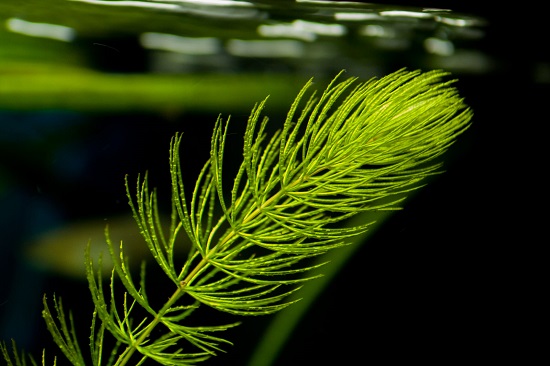
Hornwort is a rapidly-growing plant that can reach a height of 10 feet. This is a very famous plant in the aquarium hobby, and it is also very simple to care for.
How much light does it require?
When it comes to hornwort lighting, the more light it receives, the faster it grows and the greener it becomes.
So, for bigger and greener plants, give it high-intensity light.
Substrate requirements:
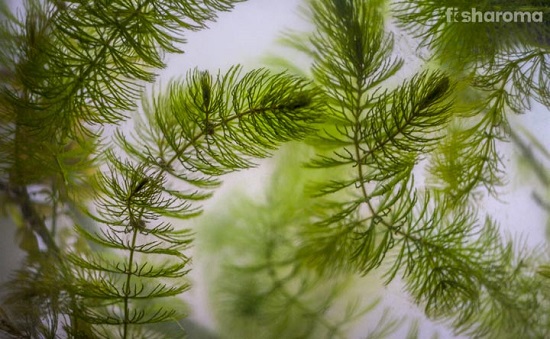
Hornwort can be grown in any medium. This plant does not have true roots, but its leaves can be used to anchor it into the substrate.
You can also float it in your aquarium.
Fertilization requirements:
Hornwort’s allopathic abilities are the key to its rapid growth. Because of its allopathic abilities, it can produce a chemical that inhibits the growth of other plants in the aquarium.
As a result, hornwort consumes all of the nutrients in the aquarium. If you have any other plants in your aquarium, you should insert some fertilizer so that they can get the nutrients they need to grow.
2.Giant Hygro
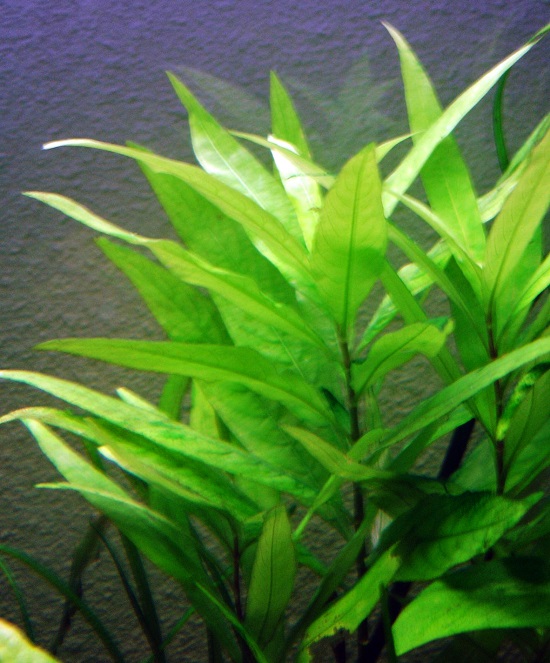
Temple plant is another name for giant hygro. It is a fast-growing, low-maintenance plant.
It can withstand a wide range of water parameters, making it ideal for beginners.
How much light does it require?
Giant hygro does not require bright lighting. It performs well in moderate lighting of at least 2 to 3 watts per gallon from a full spectrum bulb ranging in color temperature from 5000 to 7000K.
Ideal water parameters:
Giant hygro can withstand a wide range of water conditions. T he optimum temperature for giant hygro growth is 72 to 84 degrees Fahrenheit.
The ideal pH range is 6 to 7.5, with a water hardness tolerance range of 3 to 8 KH.
Substrate requirements:

Any substrate can be used to plant Giant hygro in your aquarium, but fine gravel is preferred.
Planting Giant hygro is simple; simply place it on the substrate, and its stem will begin to grow roots and penetrate the substrate.
You can also grow the tip of the plant into the substrate.
Fertilization requirements:
Fertilizers high in iron and trace elements must be applied on a regular basis to giant hygro.
Because Giant hygro obtains its nutrients from the substrate, use substrate fertilizers such as root tabs.
Tip:
If you keep Giant hygro under high-intensity light or if it doesn’t get enough iron, the leaves will turn yellow.
So keep this plant in moderate lighting conditions and feed it iron-rich fertilizers on a regular basis.
3.Anacharis
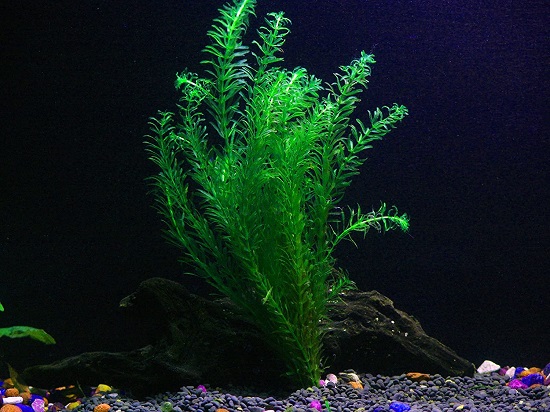
Anacharis is also known as Egeria, Brazilian Elodea, and Brazilian Waterweed. Anacharis can tolerate a wide range of water parameters and is very easy to care for, making it an excellent choice for beginners.
You can keep this plant in either a cold-water or a tropical fish tank because it can endure a wide range of water parameters.
How much light does it require:
You should ideally provide moderate lighting to the Anacharis plant. If you give this plant low lighting, it will die, and if you give it high lighting, it will grow algae.
As a result, you should provide this plant with moderate lighting of at least 2 Watts per gallon.
Ideal water parameters:
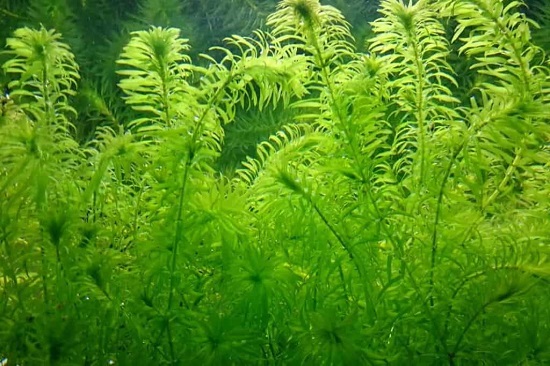
Anacharis can withstand a wide range of water conditions. Anacharis grows best at temperatures ranging from 60 to 82 degrees Fahrenheit.
The pH tolerance range is between 6.5 and 7.5, and the hardness tolerance range is between 3 and 8 KH. Anacharis’ respiration is affected by the different acidity levels.
Substrate requirements:
Anacharis can develop in any medium. However, because it can obtain nutrients from both water and substrate, it will grow quickly if planted in a nutrient-rich substrate.
Fertilization requirements:
Anacharis can grow in a cold water aquarium without the use of fertilizers. However, if you have a tropical fish aquarium, you should supplement it with carbon dioxide-rich fertilizers.
Fertilizers can be added as substrate fertilizers, such as root tabs, or as liquid fertilizers.
Tip:
This plant can act as a filter in your aquarium by catching and holding floating debris.
4.Water Wisteria
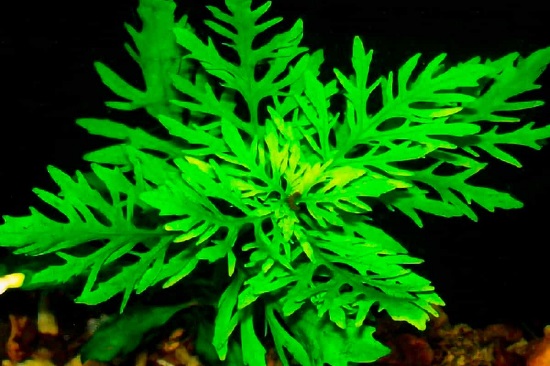
Water wisteria is a tall, rapidly-growing plant that can reach 20 inches in height. This is a tough plant that can withstand a wide range of water conditions, making it ideal for beginners.
How much light does it require?
Water wisteria grows in any lighting condition, as long as it is not in the shade. For optimal growth, you should provide it with at least 2 to 3 watts per gallon of light.
Ideal water parameters:
The optimal water temperature for water wisteria growth is between 70 and 82 degrees Fahrenheit. The pH tolerance range is 6.5–7.5, and the hardness tolerance range is 2–8 KH.
Substrate requirements:

Water wisteria develops in sand substrate in their natural habitat, so you should plant it in sand substrate in your aquarium.
However, it can also grow in fine gravel substrates. The size and rate of growth of this plant will differ depending on the substrate.
Fertilization requirements:
Water wisteria can live without fertilizer, but it can benefit from some liquid fertilizer for greener, faster growth.
Tip:
Water wisteria can grow rapidly if given enough nutrients. As a result, you should keep an eye on its growth and trim it on a regular basis.
5.Aponogeton Crispus
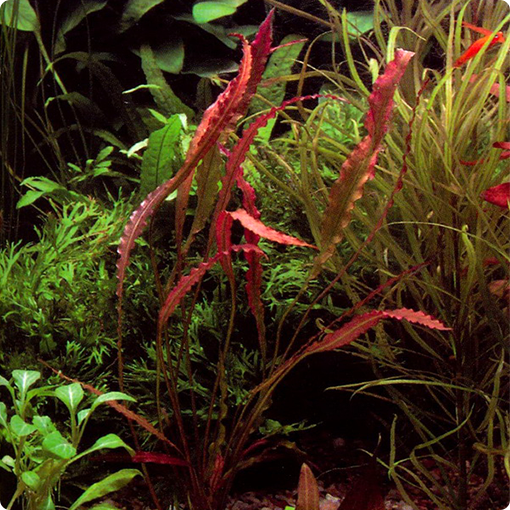
Aponogeton Crispus is a tall, fast-growing aquarium plant that can reach 10 inches in height. This is a very simple plant to care for, but it does needs a lot of nutrients to thrive.
How much light does it require?
Aponogeton Crispus is not a plant that requires a lot of light. If you only give it 0.5 watts per liter, it will do well.
Ideal water parameters:
Aponogeton Crispus grows best at temperatures ranging from 64 to 86 degrees Fahrenheit. The water’s pH should be less than 7.5.
Substrate requirements:
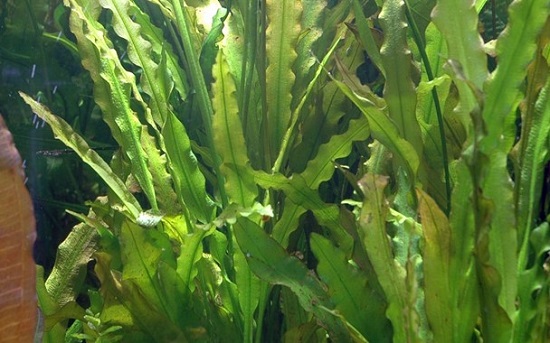
Because Aponogeton Crispus requires a lot of nutrients to grow properly, it should be planted in a nutrient-rich substrate.
Fertilization requirements:
Because Aponogeton Crispus needs a lot of nutrients to grow in the aquarium, you should feed it both substrate fertilizers and liquid fertilizers.
Tip:
For its rapid growth, you should supplement chosen on Christmas with seo2.
6.Green Cabomba

Green Cabomba is native to the southern United States and is expanding to northern areas of the United States as well as other countries.
Green Cabomba is a tall, fast-growing aquarium plant that can reach 11 inches in height. Carolina fanwort and Brazilian fanwort are other names for it.
This is a very delicate plant that can be difficult to care for, so if you are a beginner, this may not be the best choice for you.
You should also avoid this plant if you have plant-eating fish in your aquarium, such as Goldfish or cichlids.
How much light does it require?
Green cabomba does not demand a high intensity light when it comes to lighting. You should keep it in low to moderate light for a longer period of time.
Ideal water parameters:
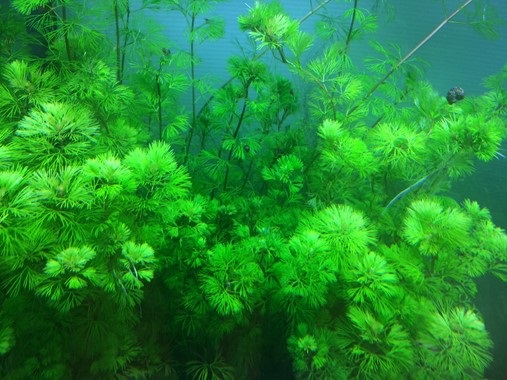
Green Cabomba grows best at temperatures ranging from 70 to 82 degrees Fahrenheit. The pH tolerance range is 6.8 to 7.5, and the water hardness range is 3-8 KH.
Substrate requirements:
You can either let the Green Cabomba plant float in your aquarium or plant it in the substrate. If you are going to plant it in a substrate, choose a nutrient-rich substrate for this plant.
Fertilization requirements:
Green Cabomba needs a lot of iron to grow properly. As a result, you should feed it iron and other mineral-rich fertilizers in the form of root tabs for liquid fertilizer.
It is also possible to supplement the plant with CO2, though this is not required.
Tip:
Growing a Green Cabomba plant can be difficult, but if you provide it with the right environment and nutrients, it can quickly take over your tank, so you should trim it on a daily basis.
7.Ludwigia Repens
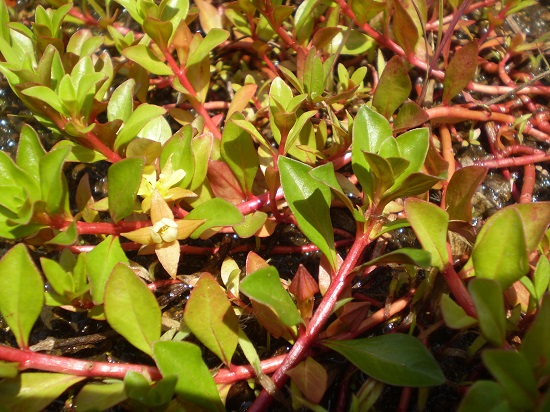
Ludwigia repens is a tall stem plant that requires little maintenance. This plant can be kept in a cold water aquarium because it can withstand temperatures as low as 60 degrees Fahrenheit.
It can grow very quickly if you provide it with the right water parameters and nutrients. This is a very famous coloring plant that comes in a variety of colors ranging from green to brown and red.
How much light does it require?
Ludwigia repens necessitates moderate to high light to grow. You should provide it with at least 2-4 Watts of light per gallon.
Ideal water parameters:
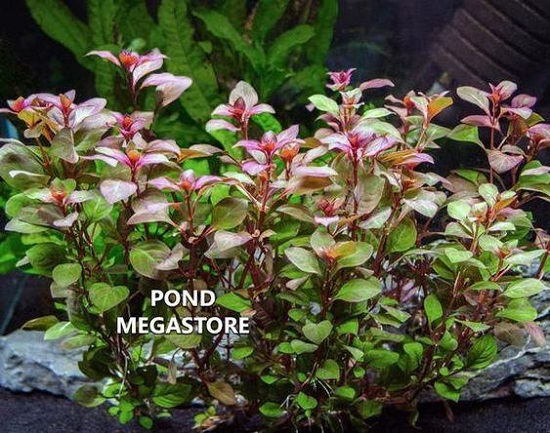
Ludwigia repens can withstand a wide range of water conditions. It can survive in temperatures ranging from 60°F to 86°F. The P H tolerance ranges from 5-8.
When it comes to this plant, you don’t have to worry about hardness because it can endure water of any hardness level, from very soft to hard.
Substrate requirements:
Ludwigia repens can be grown in a variety of soil types. However, sand substrate (except organic volcanic sand) should be avoided because it can crush its roots.
Fertilization requirements:
Ludwigia repens is a hardy plant that can grow on its own without the use of fertilizers.
However, if you provide it with CO2 fertilizers, it will rise rapidly.
8.Jungle Vallisneria
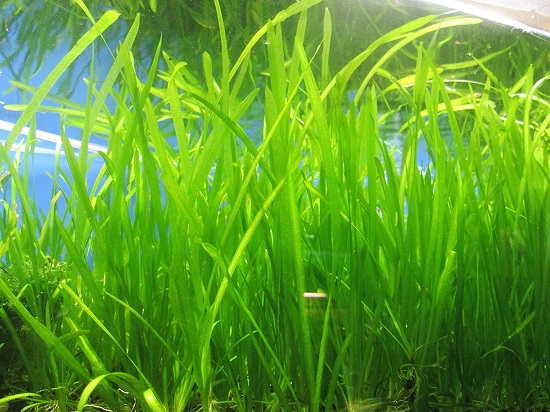
Jungle Vallisneria is a tough plant that can withstand a wide range of water conditions. It is a tall plant that can reach a height of 6 feet.
It was one of the first aquatic plants introduced into the aquarium hobby and remains a favorite among many aquarists.
How much light does it require?
When it comes to light, the more light the Jungle Vallisneria receives, the faster it grows. You should give it plenty of light to ensure good coloration and growth.
It can thrive in low-light conditions as well, but its growth will suffer as a result. For this plant, you can use any type of light, including LED, fluorescent, CFL, and so on.
Ideal water parameters:
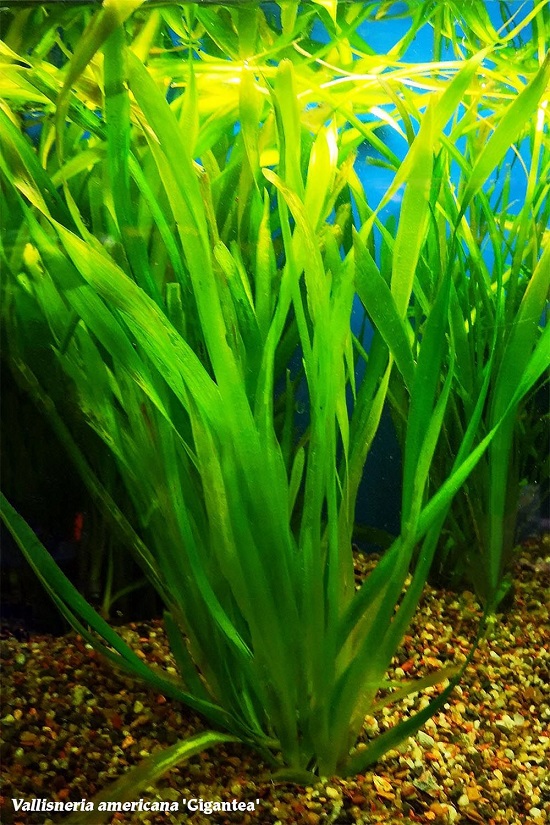
Jungle Vallisneria can withstand a wide range of water parameters, particularly temperature.
It can withstand temperatures ranging from 65°F to 85°F. The pH tolerance range is 6.8 to 8.0. It also performs well in water ranging from moderately hard to very hard.
Substrate requirements:
Jungle Vallisneria grow well in gravel or sand. However, if you want it to grow faster, plant it in a nutrient-rich substrate.
Fertilization requirements:
Jungle Vallisneria can grow despite a lack of nutrients, but it will thrive even more if you supplement it.
So, if you want Jungle Vallisneria to grow faster, you should feed it iron-rich fertilizers. These fertilizers should be applied after the weekly water change.
9.Italian Vallisneria
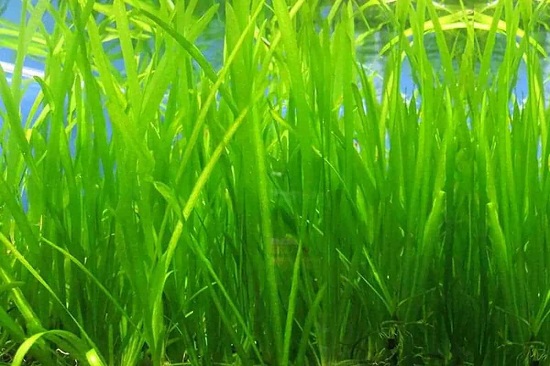
Italian Vallisneria is a hardy and inexpensive plant. It is a tall plant that can reach a height of 21 inches.
It is very simple to care for, and if you provide it with the right environment and nutrients, it can grow very quickly.
How much light does it require?
Italian Vallisneria can thrive under moderate lighting. However, for rapid growth, keep it in high-lighting conditions.
Ideal water parameters:

Temperatures ranging from 72 to 80°F are ideal for the better development of Italian Vallisneria. The pH tolerance range is 6–7.5, and the hardness tolerance range is 4–18°N.
Substrate requirement:
For Italian Vallisneria, you can use any substrate (even send).
Fertilization requirements:
Italian Vallisneria can grow well without fertilizer, but it will grow faster if you supplement it with supplementary CO2 fertilisers.
10.Water Sprite
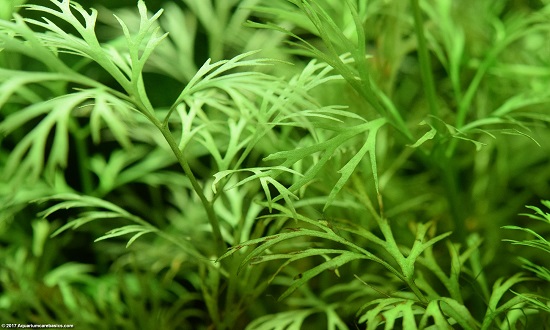
One of the most popular aquatic plants in the hobby is Water Sprite.
This is a tall stem plant that can reach a height of 13 inches. It is also very simple to maintain, making it ideal for beginners.
How much light does it require?
Water sprites prosper in high-light environments in their natural habitat. As a result, you should provide it with adequate lighting in your aquarium.
Ideal water parameters:
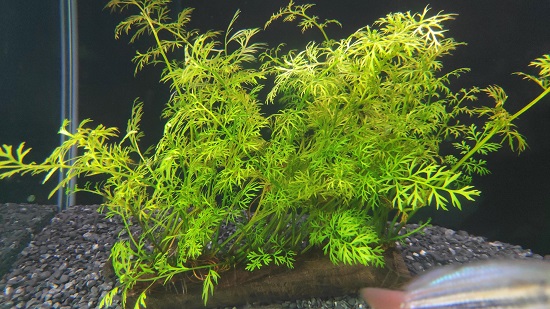
Water Sprite can withstand a wide range of water parameters.
This plant prefers water temperatures ranging from 68 to 82 degrees Fahrenheit. The pH tolerance range is 6–7.5.
In addition, the hardness tolerance range is 3-8 KH.
Substrate requirement:
Water Sprite can hover in your aquarium or be planted in the substrate.
This plant can be grown in any medium. A sand or gravel substrate is suggested.
Also, if you keep this plant in a nutrient-rich substrate, it will grow quickly.
Allowing it to float in your aquarium will cause its leaves to grow larger as it receives more light on the surface.
Fertilization requirement:
Water Sprite can thrive in the absence of fertilizer. However, if you supplement it with daily doses of fertilizer, it will grow faster.
Best background plants for nano tanks:
1.Cryptocoryne Wendtii
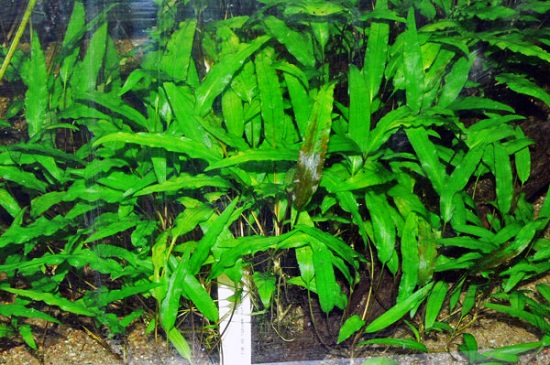
Cryptocoryne wendtii is a popular plant in the aquarium hobby.
This plant comes in a variety of colors, including red, brown, and green. It is also available in a variety of leaf sizes ranging from 5 to 18 inches.
Green Cryptocoryne wendtii, in particular, works well as a background plant in small aquariums. This plant can reach a height of 10 to 15 cm and is very easy to care for.
How much light does it require?
Cryptocoryne wendtii can endure a wide range of lighting conditions, from low to high.
You should ideally use fluorescent T5 or T8 bulbs for it. You can also use any type of LED lighting bulb.
Ideal water parameters:
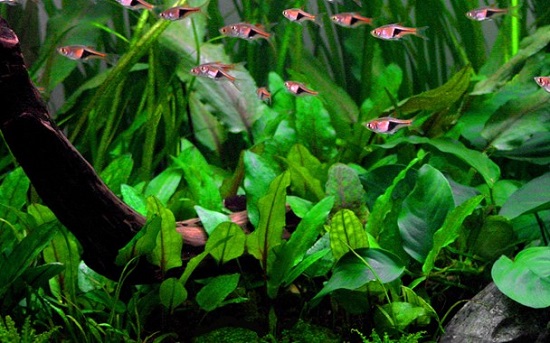
Cryptocoryne wendtii grows best in water temperatures ranging from 72 to 80 degrees Fahrenheit. The pH tolerance range is 6 to 8, and the hardness range is 3 to 8 KH.
Substrate requirements:
Because Cryptocoryne wendtii obtains the majority of its nutrients from the substrate, it should be grown in a nutrient-rich environment.
However, you can also use gravel substrate or any soil substrate, but you will need to replenish it with root tabs.
Fertilization requirements:
Fertilizers in the form of root tabs and liquid fertilizers should be used to supplement the development of Cryptocoryne wendtii.
2.Corkscrew Vallisneria
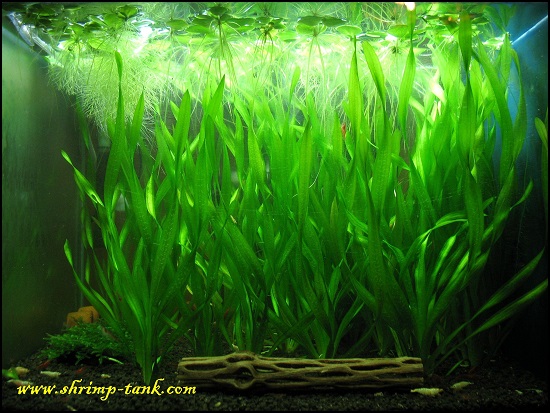
Corkscrew Vallisneria can endure a wide range of water parameters and is very easy to care for, making it an excellent choice for beginners.
It makes an excellent background plant for small to medium aquariums.
How much light does it require?
Corkscrew Vallisneria thrives in bright light, but it can also thrive in low-light conditions.
Ideal water parameters:
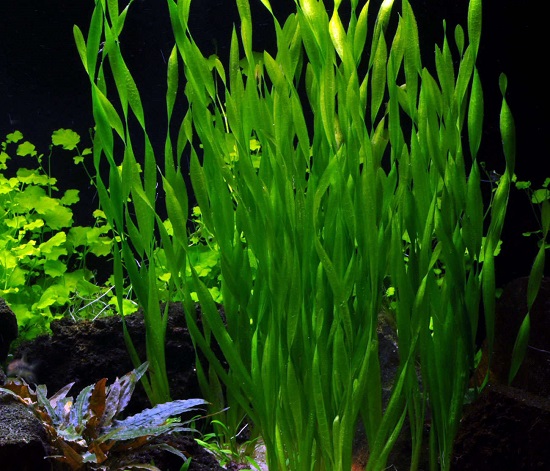
Corkscrew Vallisneria can withstand a wide range of water conditions.
It works best at temperatures ranging from 68 to 82°F. It tolerates pH levels ranging from 5 to 8, and it performs well in hard water.
Substrate requirements:
Corkscrew Vallisneria can develop in almost any substrate, but it will grow faster if planted in a nutrient-rich substrate.
Fertilization requirements:
You should insert some root tabs to help Corkscrew Vallisneria grow faster.
3.Rotala Indica

Rotala Indica is a vigorously growing stem plant. This plant is difficult to care for because it necessitates strict water parameters.
It will grow in a tropical fish aquarium but should be avoided in a cold water aquarium.
Because it is a very sensitive plant, you should prevent keeping it in your aquarium if you have any aggressive plant-eater fish, such as Goldfish.
How much light does it require?
Rotala Indica thrives in light conditions ranging from moderate to high. You should ideally provide it with 3 to 5 watts per gallon.
Ideal water parameters:

Rotala Indica is sensitive to a wide range of water conditions.
This plant prefers water temperatures ranging from 70 to 82°F. The pH tolerance range is 6.5 to 7.5, and the hardness range is 3 to 8 KH.
Substrate requirements:
Rotala Indica should be planted in an aquarium with sand or fine gravel substrate.
Fertilization requirements:
Fertilizers high in iron, potassium, trace elements, and carbon dioxide should be used to supplement Rotala Indica.
It should also be supplemented with more CO2.
4.Java Fern
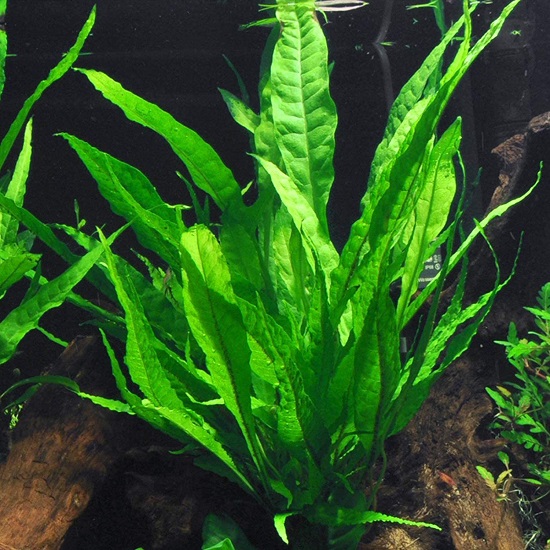
The Java fern is a stem plant that is very easy to take care for. Because this plant can endure a wide temperature range, it can be used in both a tropical fish aquarium and a cold-water fish aquarium.
It is also a very hardy plant, making it ideal for newcomers.
How much light does it require?
Java fern grows in low-light conditions. You should preferably provide it with at least 2 watts of light per gallon.
Ideal water parameters:
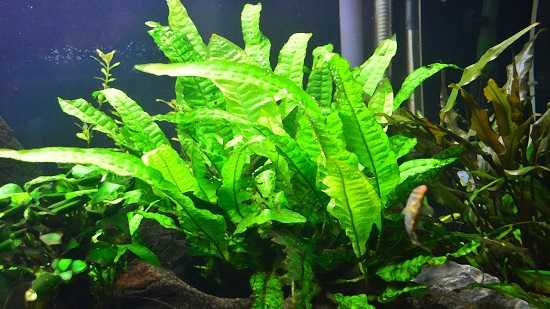
The Java fern can withstand a wide range of water conditions.
It can withstand temperatures ranging from 68 to 82°F. The pH tolerance range is 6–7.5, and the hardness tolerance range is 3–8 KH.
Substrate requirements:
There is no need for a substrate for Java fern. It obtains the majority of its nutrients from the water.
You can attach eat to any aquarium ornament or driftwood. You can also hover it in your aquarium.
Fertilization requirements:
Java fern can grow in the absence of fertilizer. However, if you supplement it with fertilizer, it will promote faster growth.
Because it gets the majority of its nutrients from water, you should feed it liquid fertilizers.
5.Dwarf Sagittaria
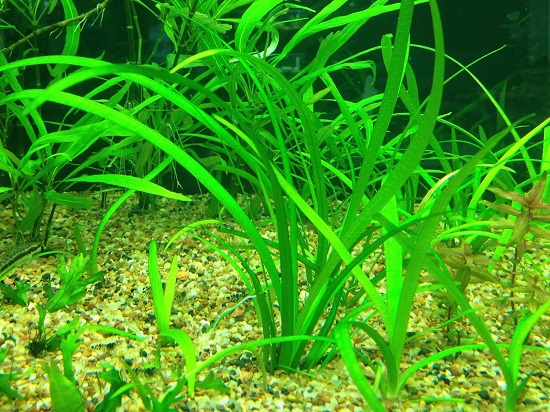
Dwarf Sagittaria is a low-maintenance plant that grows quickly. It can withstand a wide range of water parameters and can be used in both tropical and cold water aquariums.
This plant is very hardy, making it ideal for beginners.
How much light does it require?
You should optimally provide it with moderate lighting.
Ideal water parameters:

Dwarf Sagittaria grows best at temperatures ranging from 68 to 80°F.
The pH tolerance range is 6–8, and the water hardness tolerance range is 3–12.
Substrate requirements:
A soil substrate rich in iron and CO2 is perfect for Dwarf Sagittaria.
Fertilization requirement:
This plant can thrive without fertilizer, but it can benefit from some root tabs.
6.Stargrass
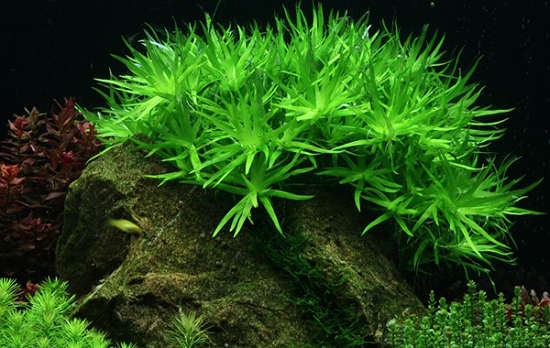
Stargrass is a tall, fast-growing aquarium plant that can reach 11 inches in height.
This plant is very easy to care for and can endure a wide range of water parameters, making it an excellent choice for beginners.
This plant can be kept in a cold water aquarium because it can withstand temperatures as low as 50°F.
How much light does it require?

When it comes to lighting, Stargrass is very undemanding. It can live in any lighting condition, from dim to bright.
However, it will only reach its full potential if you supplement it with additional CO2 fertilizers and strong lighting.
Ideal water parameters:
Star grass can withstand a wide range of water conditions.
This plant prefers water temperatures ranging from 50 to 86°F. The pH tolerance range is 5 to 8, and it can withstand water hardness of up to 21°KH.
Fertilization requirements:
Stargrass can withstand without fertilizer, but it will necessitate fertilizer to reach its full potential.
As a result, you should supplement it with fertilizer, particularly CO2-rich fertilizer.
7.Rotala Rotundifolia
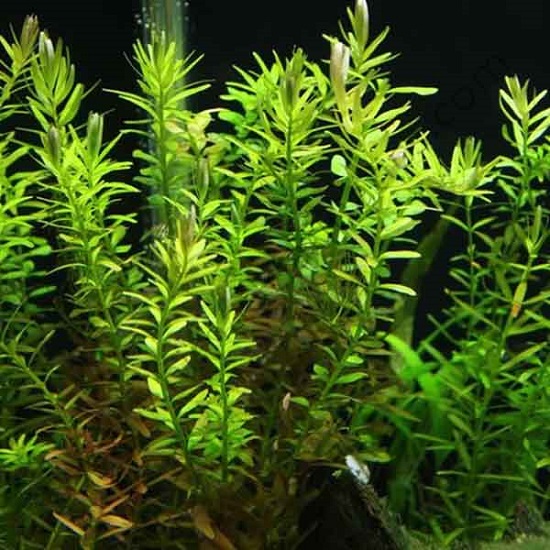
Rotala Rotundifolia is a famous tall stem plant that can reach heights of 11 inches.
This plant can withstand a wide range of water parameters, particularly temperature, and can be used in both cold water and tropical aquariums.
When given enough light, this plant can produce red leaves.
How much light does it require?
When it comes to light requirements, Rotala rotundifolia is a relatively low-maintenance plant when compared to other species in the genus Rotala.
This plant does well in medium light, but it needs strong lighting to produce red leaves.
Ideal water parameters:
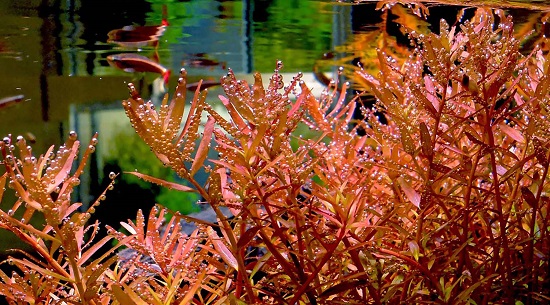
Rotala rotundifolia can withstand a wide range of water conditions.
It can withstand water temperatures ranging from 39°F to 89°F.
The pH tolerance range is 4–8, and the hardness tolerance range is 2–30° dGH.
Fertilization requirements:
Rotala rotundifolia can thrive in the absence of fertilizer.
However, if you supplement it with fertilizer, it will promote faster growth.

